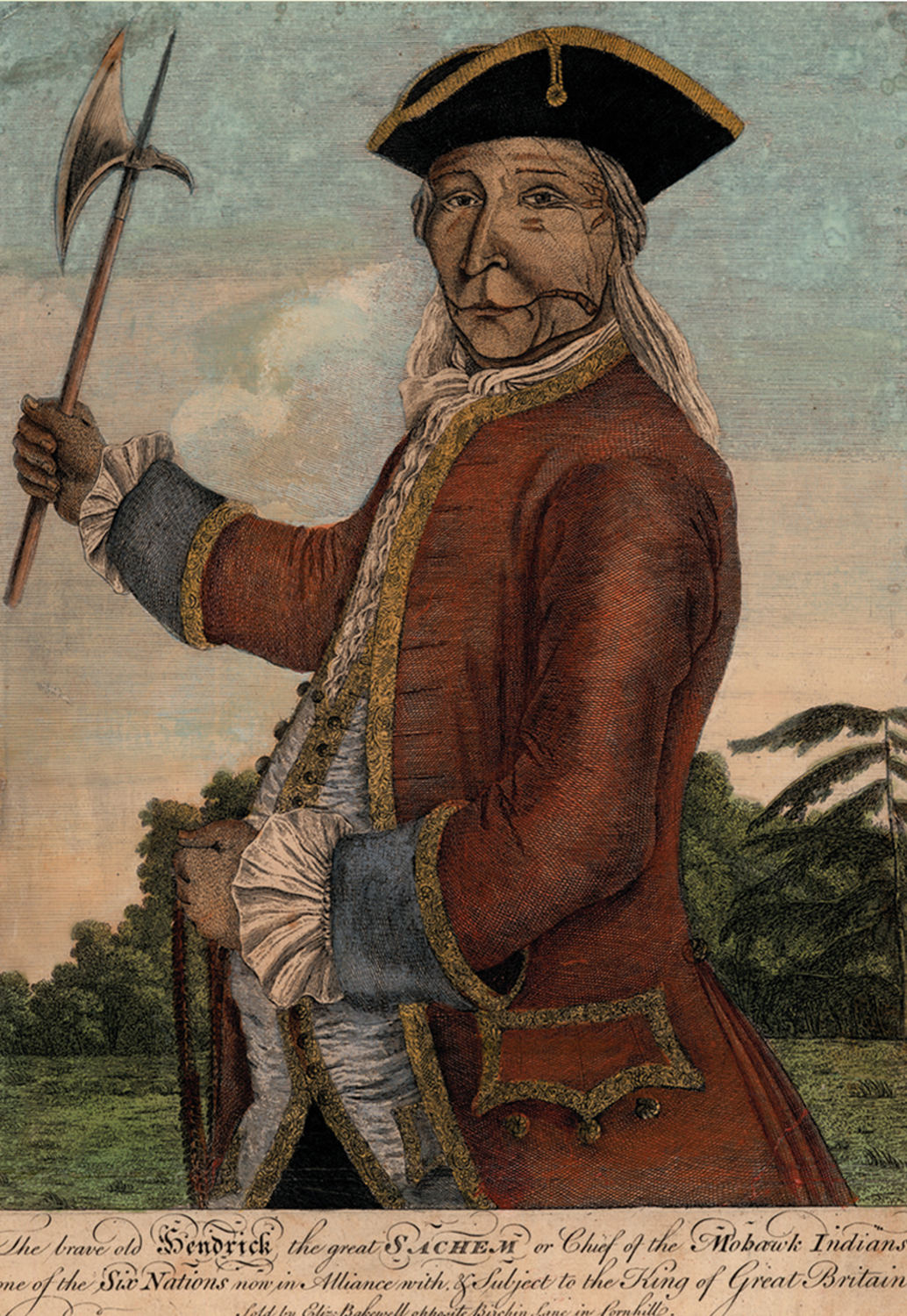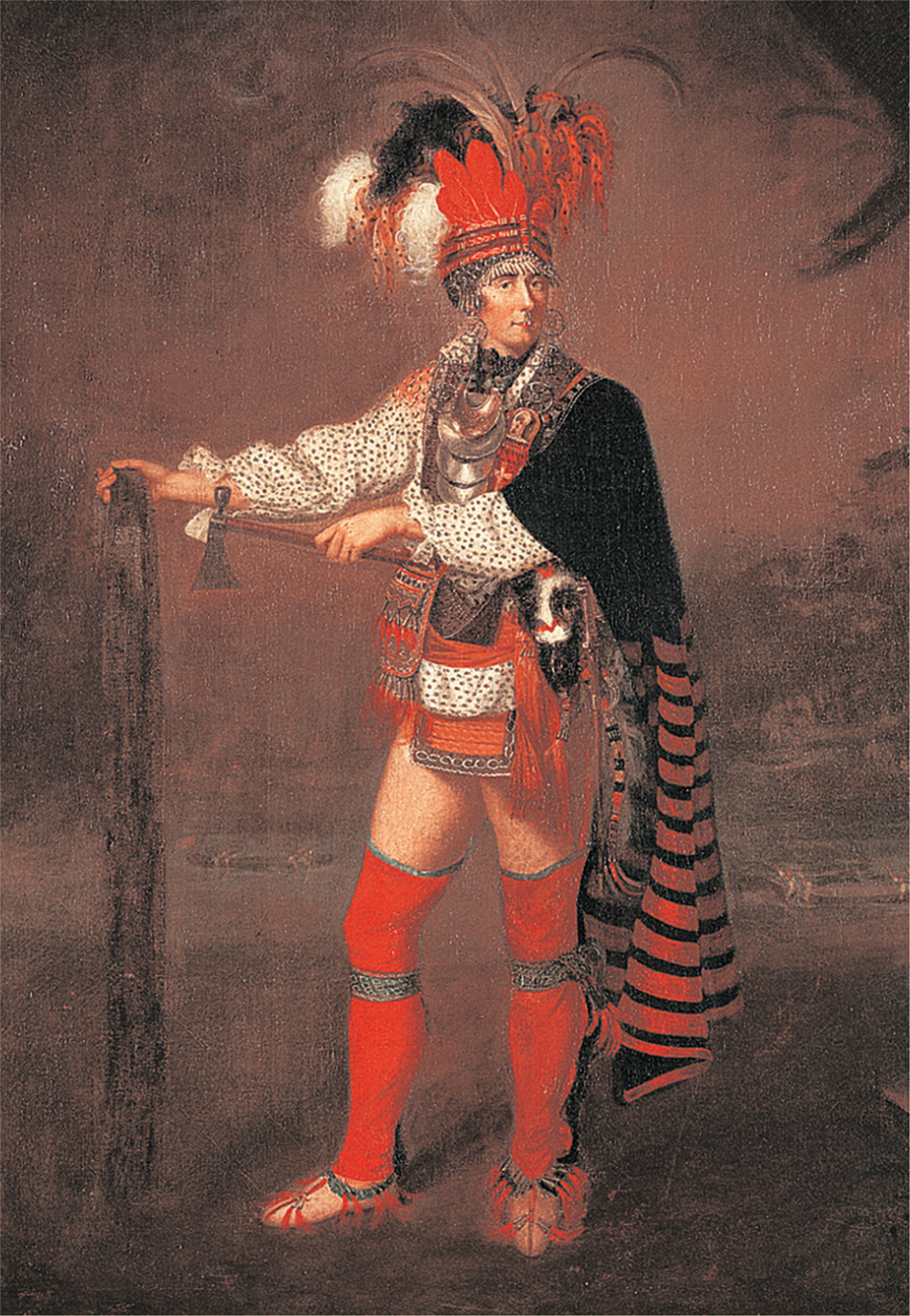The American Promise:
Printed Page 140
VISUALIZING HISTORY
Cultural Cross-Dressing in Eighteenth-Century Portraits


Having one’s portrait painted was a mark of distinction in the eighteenth century, usually available only to the wealthy or newsworthy. Rarer still were portraits of sitters dressed in clothes from other cultures. Here, Chief Hendrick, the Mohawk leader at the 1754 Albany Congress, appears in fine British clothing in a 1755 engraving, while John Caldwell, a titled Irishman and a British army officer, sports colorful Indian dress in a 1780 British painting.
Soon after the Albany Congress, Hendrick traveled to Philadelphia, where an elite men’s club paid for a professional portrait. When Hendrick met death in the first northern battle in the Seven Years’ War, great public mourning erupted both in America and in Britain. Two taverns and three sailing vessels in Philadelphia were named in his honor. Prints of this engraving, based on the portrait, were sold in British and American bookshops.
Hendrick’s gold-
John Caldwell, of an Irish aristocratic family, spent the Revolutionary War (see “The War in the West: Indian Country” chapter 7) at Fort Detroit, a British garrison supporting the Great Lakes tribes battling Americans. The Ojibwas of that region honored Caldwell by giving him an Indian name in aceremony, and it was likely that he then acquired the clothing and accessories shown in this portrait. Notice the headdress, breechcloth, beaded pouch, knife and sheath, tomahawk, wampum belt, red leggings and garters (showing an expanse of thigh, immodest by British standards). Why might Caldwell have posed in this garb? Was he trying to channel the power of Indian men, doubtless seen as exotic by British viewers of the painting? Did Caldwell “go native”? Or was this his way to display manly courage?
Consider the differences in these images. Hendrick’s portrait of 1755 was engraved and publicly disseminated to memorialize the leader of one of the few tribes loyal to Britain during the Seven Years’ War. The taverns and sailing ships named for him further mark his celebrated status. Caldwell’s portrait was a private possession, commissioned after the Revolutionary War when much of Britain’s North American land claims had fallen to the colonies. What attitude do you think Hendrick and Caldwell intended to convey regarding the other’s culture?
SOURCES: Chief Hendrick: Courtesy of the John Carter Brown Library at Brown University; John Caldwell: © Walker Art Gallery, National Museums Liverpool/The Bridgeman Art Library
Questions for Analysis
- Why was Chief Hendrick so celebrated by the Anglo-
Americans after his death, and why did his fame spread to England? - In receiving an Indian name and wearing Indian clothing, had Caldwell in some sense been adopted by the Ojibwa?
- How might Hendrick and Caldwell have reacted to the other’s portrait?
Connect to the Big Idea
How did Native Americans participate in the Seven Years’ War?